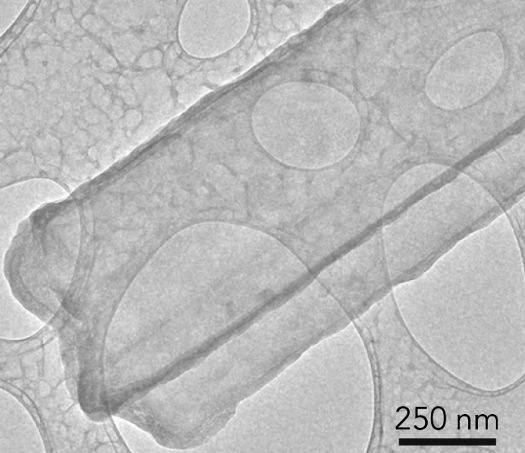 |
| December 12, 2017 | Volume 13 Issue 46 |
Designfax weekly eMagazine
Archives
Partners
Manufacturing Center
Product Spotlight
Modern Applications News
Metalworking Ideas For
Today's Job Shops
Tooling and Production
Strategies for large
metalworking plants
Scientists get first close-ups of finger-like growths that trigger lithium-ion battery fires
Remarkable cryo-EM images of dendrites show details down to the individual atom, and should yield new insights into why high-energy batteries fail.
Scientists from Stanford University and the Department of Energy's SLAC National Accelerator Laboratory have captured the first atomic-level images of finger-like growths called dendrites that can pierce the barrier between battery compartments and trigger short circuits or fires. Dendrites and the problems they cause have been a stumbling block on the road to developing new types of batteries that store more energy so electric cars, cell phones, laptops, and other devices can go longer between charges.
This is the first study to examine the inner lives of batteries with cryo-electron microscopy, or cryo-EM. The technique's ability to image delicate, flash-frozen proteins and other "biological machines" in atomic detail was honored with the 2017 Nobel Prize in chemistry.

This image of a lithium metal dendrite, taken with cryogenic electron microscopy or cryo-EM, shows that freezing has preserved its original state, revealing that it's a crystalline nanowire with six well-defined facets. Dendrites can pierce the barrier between battery chambers and trigger fires; cryo-EM is the first technique that can image them in atomic detail without damaging them. [Y. Li et al., Science]
The new images reveal that each lithium metal dendrite is a long, beautifully formed six-sided crystal -- not the irregular, pitted shape depicted in previous electron microscope shots. The ability to see this level of detail for the first time with cryo-EM will give scientists a powerful tool for understanding how batteries and their components work at the most fundamental level and for investigating why high-energy batteries used in laptops, cell phones, airplanes, and electric cars sometimes fail, the researchers said. They reported their findings in Science Oct. 26.
VIDEO: Cryo-EM close-up image of a lithium metal dendrite. This video demonstrates how cryo-EM is able to get a close-up image of a lithium metal dendrite when other methods fail. In the first half, a dendrite curls up and melts when hit with an electron beam during transmission electron microscopy, or TEM, which takes place at room temperature. The second half zooms in on a flash-frozen dendrite -- magnified about 400,000 times, so it nearly fills the frame -- during cryo-EM imaging. Freezing protects it from the electron beam so scientists can see its intact structure for the first time, down to an atomic level. The solid electrolyte interphase (SEI) layer that coats the dendrite and its crystalline components is also clearly visible along its right edge. [Credit: Yuzhang Li/Stanford University]
"This is super exciting and opens up amazing opportunities," said Yi Cui, a professor at SLAC and Stanford and investigator with the Stanford Institute for Materials and Energy Sciences (SIMES), whose group did the research.
"With cryo-EM, you can look at a material that's fragile and chemically unstable and you can preserve its pristine state -- what it looks like in a real battery -- and look at it under high resolution," he said. "This includes all kinds of battery materials. The lithium metal we studied here is just one example, but it's an exciting and very challenging one."
Source: Stanford University
Published December 2017
Rate this article
View our terms of use and privacy policy
